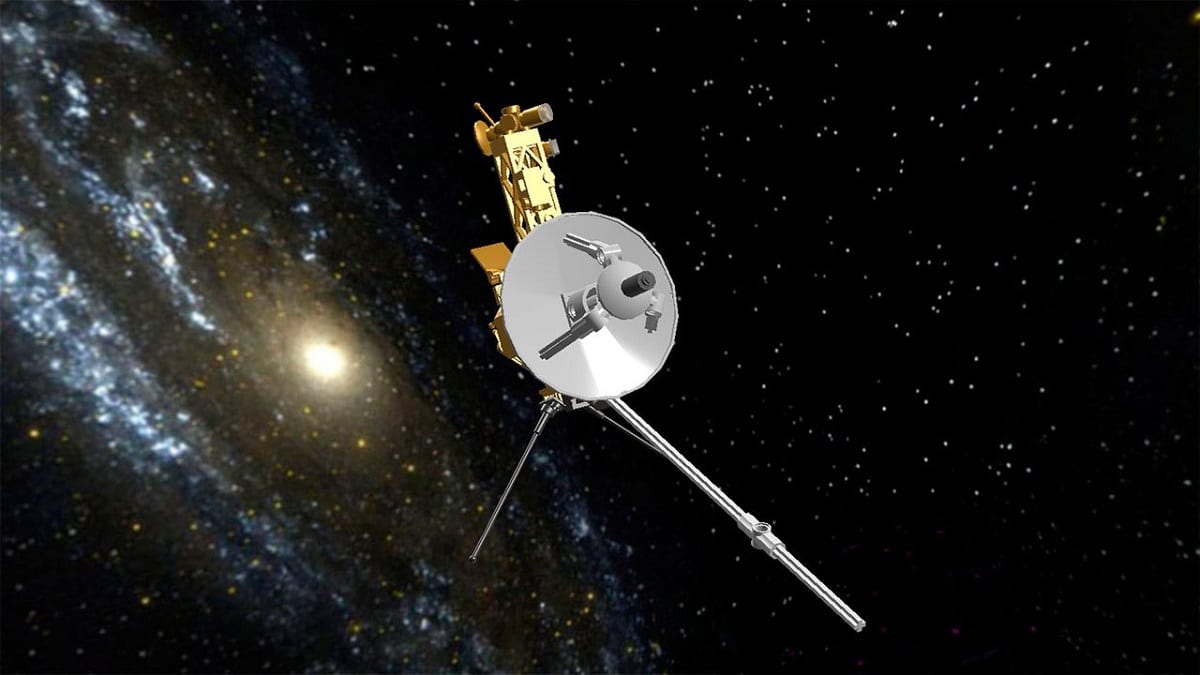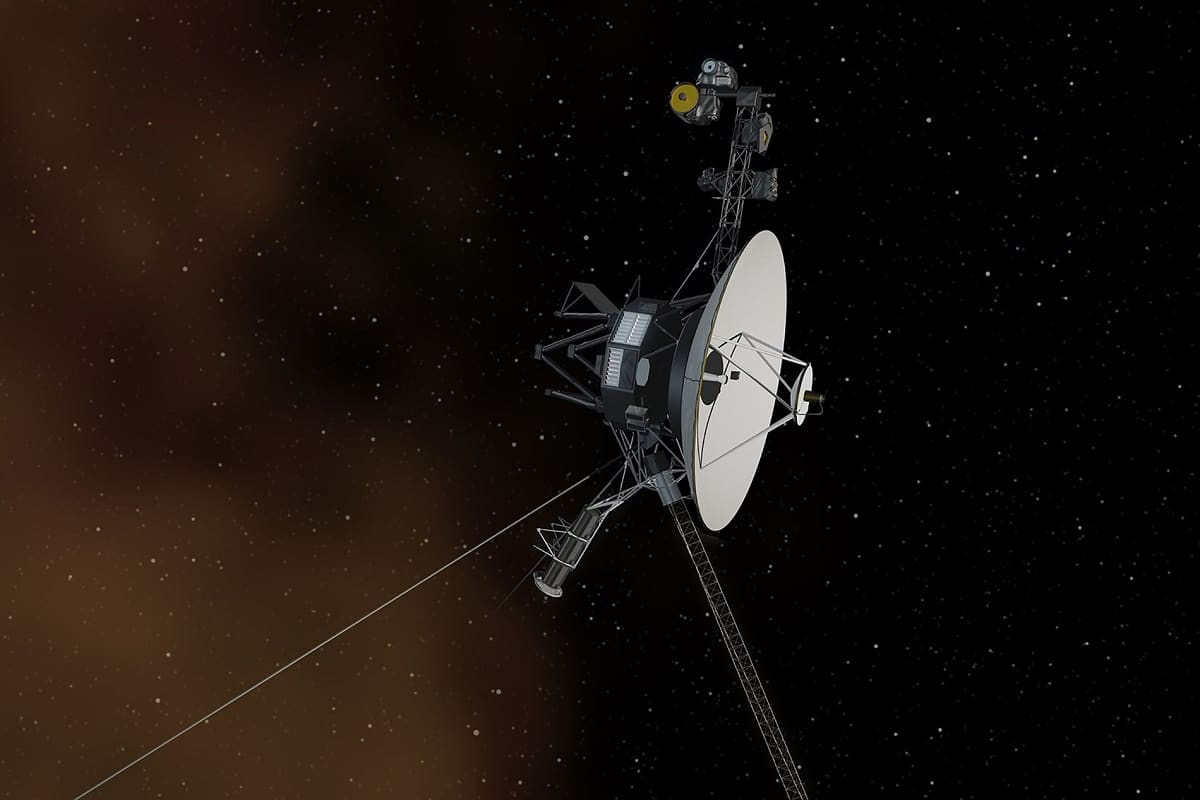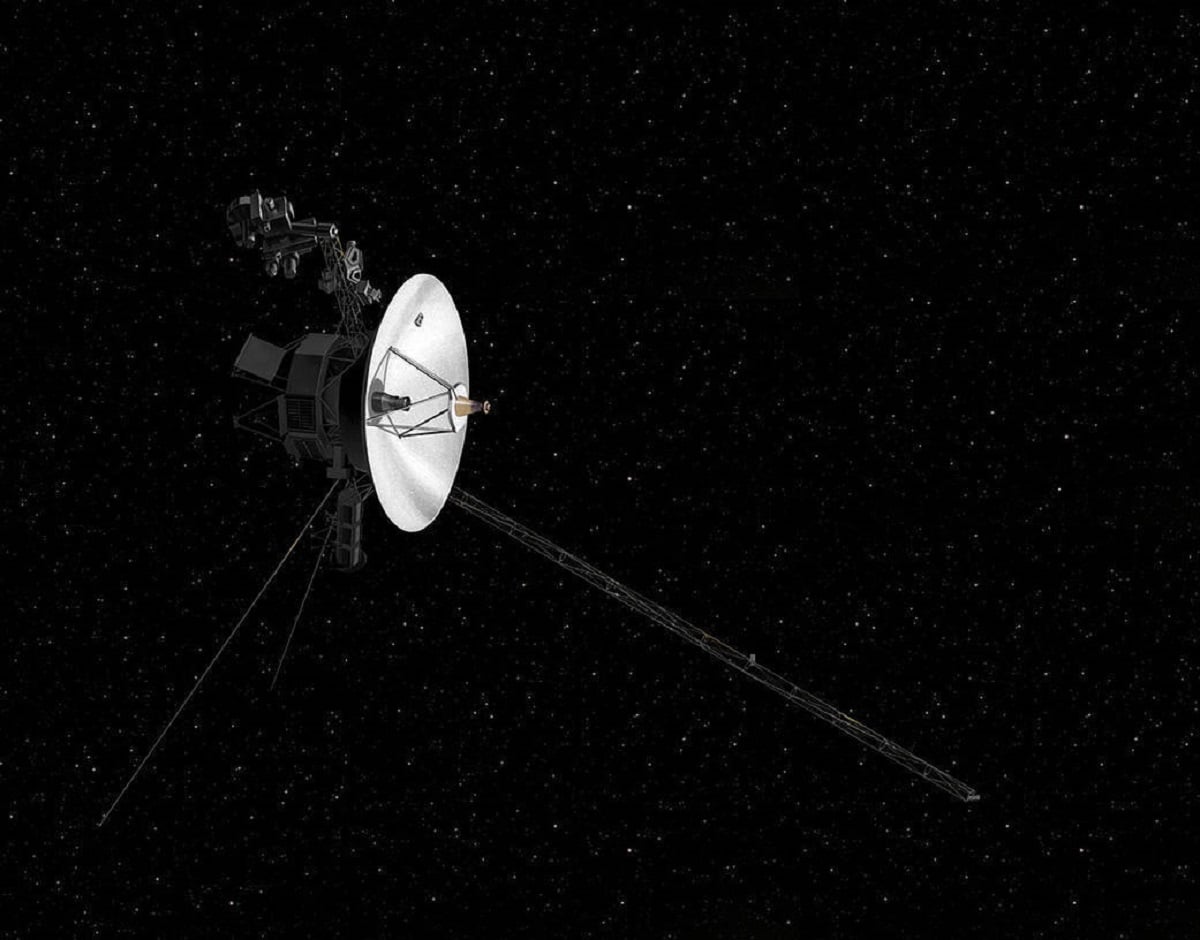
All the Voyager probes they are a remarkable milestone in space exploration and represent one of mankind's greatest scientific feats. These spacecraft, known as Voyager 1 and Voyager 2, were launched by NASA in 1977 with the goal of studying the outer planets of our solar system.
In this article we are going to tell you about the characteristics, importance and feats of the Voyager probes.
Voyager probes

Launched from NASA's Kennedy Space Center in Cape Canaveral, Florida, Voyager 1 is an unmanned space probe that departed on its mission on September 5, 1977 via a Titan IIIE rocket. It remains operational and is currently en route to the outer edges of the solar system. Its main objective is to examine and investigate these unexplored territories of the cosmos.
The main goal of Voyager 1's maiden voyage was to explore Jupiter and Saturn, taking advantage of their location and making use of the novel gravitational boost technique. This approach allowed the mission to investigate multiple planets, resulting in significant cost and time savings for the project.
Voyager 1, although it was launched after its twin, Voyager 2, had a mission trajectory with higher velocity, which allowed him to reach Jupiter before. Its initial photographs of Jupiter were taken in January 1979, and its closest approach to it was achieved on March 5, 1979, when it was only 278 km away. Over the course of his mission to Jupiter, he captured a total of 000 images in a time span ending in April.
Voyager probe results

As a result of the spacecraft's proximity to the moon, Jupiter was able to witness volcanic activity outside our planet for the first time. This discovery was made after analyzing a photograph that it was taken several hours after the flyby, which was previously not possible for Pioneer 10 and 11. Most observations of Jupiter's magnetic field, moons, radiation conditions, and rings were captured within a 48-hour time frame due to the maximum resolution achievable from this close focus.
After being propelled by the gravitational attraction of Jupiter, on November 12, 1980, it successfully reached Saturn, approaching 124 km from the planet. During his trip, he collected significant data on the atmosphere of Saturn and its largest moon, Titan, only 6.500 km from the latter. In addition, he also discovered intricate structures within the planet's ring system.
After confirming the presence of an atmosphere on Titan, the crew in charge of the Voyager 1 mission made the decision to divert its course towards this satellite. This meant missing the next phases of the mission to Uranus and Neptune, which were instead explored by Voyager 2. The second flyby of Titan resulted in an increase in the probe's gravitational pull, causing it to drift out of plane. of the ecliptic and ended. his planetary mission.
Characteristics of both

With a speed of 17 km per second, Voyager 1 is undoubtedly the furthest man-made object from Earth, and as of August 17, 2010, it was recorded to be 17,1 million km away. of the sun.
Like its counterpart, Voyager 2, Voyager 1 is about 3,35 meters long. Most of its electronic parts are housed inside the spacecraft. Located on top of the center body of the vessel is a 3,7 meter Cassegrain reflector, which serves as a high gain antenna. Additionally, four platforms extend from the sides of the spaceship.
The Voyager 1 spacecraft, which travels a great distance from the Sun, relies on three radioisotope thermoelectric generators (RTGs) for its power. These generators transform the heat from the disintegration of plutonium into electricity, capable of generating up to 475 W. of electrical power. Unlike other interplanetary probes that use solar panels, Voyager 1 is powered by these generators.
On the other hand, Voyager 2 stands out for its durability. Despite having been in operation for more than four decades, the probe continues to send back valuable data from the fringes of our solar system. Its strength and ability to withstand the harsh conditions of deep space are a testament to the state-of-the-art engineering and meticulous care that went into designing it.
Equipped with a wide variety of state-of-the-art scientific instruments, Voyager 2 has provided unprecedented information about the giant planets in the outer solar system. On board is a "golden record" known as the "Earth Sound Record". This disc contains a selection of sounds and music from our planet, along with images and messages in various languages, intended to communicate the diversity and life on Earth to any intelligent life forms the probe may encounter on its long journey through the Earth. space.
In terms of speed, it surpasses Voyager 1. As it recedes from Earth, has managed to overcome the limits of our solar system and enter interstellar space, becoming only the second spacecraft to do so after its twin, Voyager 1. This incredible feat has allowed scientists to study conditions on the outskirts of our stellar neighborhood and gain valuable insights into the heliopause, the region where the solar wind meets. meets the interstellar medium.
Mission that has been prolonged
On April 8, 2011, Voyager 1 had traveled a staggering 17.490 billion kilometers from the Sun, reaching a point known as the Heliopause. This is the boundary where the power of the Sun begins to wane and the interstellar space beyond begins to take hold. In this vast region, the effects of radiation from distant celestial bodies are most strongly felt.
To date, no other probe launched has been able to outperform Voyager 1. According to mission controllers, it is projected that if the spacecraft remains operational while crossing the heliopause, which marks its departure from our solar system, it will become the first man-made object to venture into interstellar space. This historic event will allow scientists to directly measure the conditions of interstellar space, which could provide crucial information about the origins and characteristics of the universe.
I hope that with this information you can learn more about the Voyager probes and their characteristics.